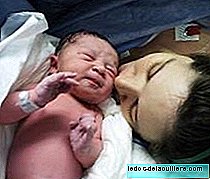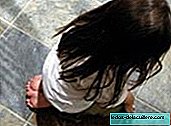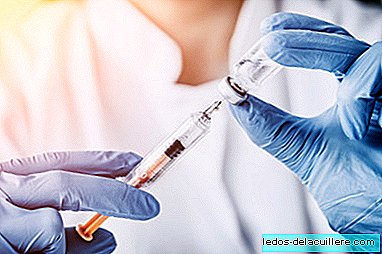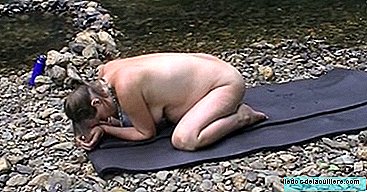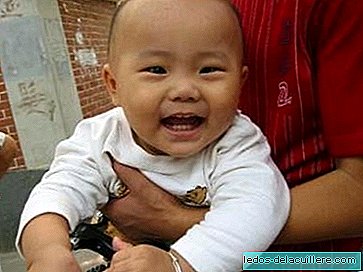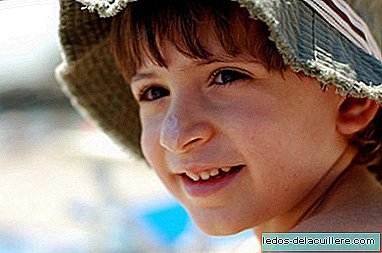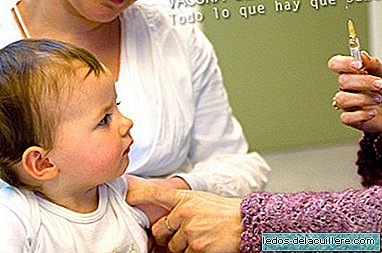
After talking a few days ago about tetanus and diphtheria vaccines, we continue with the series of entries in which we explain everything related to childhood vaccines. Today we are going to talk about the whooping cough vaccine, which is usually combined with other vaccines such as tetanus and diphtheria.
The whooping cough vaccine It is administered, in childhood, in the same presentations as the two vaccines mentioned. Babies are given within the hexavalent vaccine, administered at 2, 4 and 6 months, which protects against six diseases: tetanus, diphtheria, polio, whooping cough or pertussis, the Haemophilus influenzae type B and hepatitis B.
At 18 months it is administered within the pentavalent vaccine, which serves to prevent five diseases, which are the same as hexavalent but without the dose of hepatitis B.
Then, at 4 to 6 years, it is administered within the trivalent vaccine, along with tetanus and diphtheria.
From that age, it is no longer administered (at least in my city it is no longer administered), but because in recent years the cases of whooping cough are increasing alarmingly, since the AEP they have been recommending that it be the trivalent vaccine, that of 4 to 6 years, which is also administered at 11-12 years (in my city is administered at 13-14), as a souvenir of tetanus, diphtheria and pertussis, instead of Td (tetanus and diphtheria) usual.
In addition, shortly here in Catalonia this same vaccine, DTPa (Diphtheria, Tetanus and Acellular Pertussis), will begin to be administered to pregnant women, in order to prevent disease in babies, who do not receive the first pertussis vaccine until two months of age. In Spain I imagine that it will not take long to do so, as it is a measure that has been found useful in the US. and United Kingdom.
What is whooping cough
Whooping cough is a respiratory disease that is like a simple cold. Something like seeing that the child has a cough and mucus. However, once a few days pass, the cough remains for weeks, in irremediable coughing that causes respiratory distress and that they may end up in vomit (from sore throat, from coughing).
It is a contagious disease caused by bacteria Bordetella pertussis which is spread by respiratory tract, by respiratory droplets exhaled when breathing and speaking and by hand contact.
It is very annoying in the elderly, but it is more annoying in children, who are the ones who suffer the most and those who suffer most from it. In them it is especially dangerous and may cause respiratory failure and cyanosis (bluish skin due to lack of oxygen), hospitalization being necessary on some occasions and becoming fatal in others.
How to prevent the disease
The whooping cough vaccine It is effective in preventing the disease, however it has a very short protection over time and that is why it is necessary to re-vaccinate children from time to time. As I said, it is now also administered in adolescents (so that they do not catch the disease and act as a vehicle for it) and pregnant women.
As I mentioned a few days ago at the entrance explaining the subject of the vaccine during pregnancy, a possible solution to prevent the disease is to vaccinate the mother, father and grandparents, to prevent the baby from catching pertussis. However, it has been seen that it is more effective and economical to vaccinate pregnant women, before the baby is born.
In addition, being a respiratory disease, it is prevented with hygiene and with the highly recommended hand washing to avoid contagion.
Does whooping cough have treatment?
Yes but no. Antibiotics can help control the disease If they start right away. The problem is that, as the first symptoms are the same as a normal cold, the diagnosis is usually late, when the cough is already persistent. By then, antibiotics are less effective, but they are usually prescribed as well because they help prevent the child from infecting other children.
Sometimes, if the cough is very strong and the child stops breathing, sedatives may be prescribed. They cause sleep, but limit cough accesses.
Cough syrups do not usually work, so its use is not recommended.
Where do you get the vaccine?

Babies, that is, when placed at 2, 4 and 6 months, are given intramuscularly (inside the muscle) in the leg. In the quadriceps, to be more exact. Formerly it was administered in the buttock, but it has been seen that the absorption is worse, with muscles such as deltoids (in the shoulder, but not recommended in babies) and the quadriceps being of choice.
Side effects of pertussis vaccine
The pertussis vaccine, when joined by other vaccines, can produce side effects derived from pertussis, but also from the accompanying vaccines. The dose of pertussis administered can produce heat, redness and sensitivity in the area in almost half of the children who receive it. In addition, it can cause fever and irritability.
The tetanus portion of the vaccine can cause pain and swelling of the injection site, and sometimes a rash that usually disappears within 24 hours. Diphtheria can have the same side effects as tetanus.
When accompanied by hepatitis B, restlessness may occur, and if accompanied by Haemophilus influenza Type B can give some fever. Although in general, any vaccine can be accompanied by fever.
The occurrence of brain inflammation after the vaccine has been recognized, but the incidence is very low (1 in 110,000 cases) and it is not known whether it is a reaction to the vaccine or if it is caused by other substances or infections.
Which children should not receive pertussis vaccine
In case a child has suffered a seizure before receiving the vaccine of whooping cough the administration of the vaccine should be delayed until the cause of the seizure is known and at least six months have passed without another episode of seizure. If it is suspected that the child has a progressive disease of the nervous system, the vaccine may become contraindicated.
It is also contraindicated in case the vaccine has caused serious side effects, such as high fever (above 40.5ºC), seizures, acute crying or loss of consciousness.
Is it related to Sudden Infant Death Syndrome?
As we explained in the previous entries, it is said that the diphtheria and tetanus vaccine, combined with the other vaccines, could be related to Sudden Infant Death Syndrome (SIDS). But nevertheless, There is no scientific evidence that proves that there is a relationship between one thing and another. The myth is still alive because the first dose is given at two months, when the risk of SIDS is very high.
Photos | Tom & Katrien, Carlos Reusser Monsalvez on Flickr More information | Medline Plus, VaccinesAEP In Babies and more | 180,000 children die each year from neonatal tetanus, "Vaccines are very effective in preventing disease." Interview with Carlos González (I) and (II), Ten things we should know about vaccines



